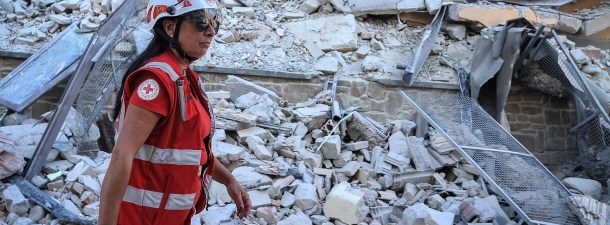The possibilities of predicting earthquakes increase with artificial intelligence techniques and the mass introduction of data in algorithms.
Throughout history, natural catastrophes have been some of the most surprisingly terrible phenomena. Cultures created entire mythologies based on these moments when nature would unleash its fury. And nowadays we still aren’t able to predict earthquakes and other natural disasters. Earthquakes are especially difficult to predict, both in terms of when they will occur and how intense they will be.
A predictive capability of this sort would be crucial in places where the risk of earthquakes is high. There are currently some applications that promise a certain anticipatory capability, but only on measured in seconds. On a personal note, knowing that an earthquake will strike in 30 seconds may be useful, but that’s as far as that knowledge goes.
For plans to face earthquakes to be conceived at a regional level by the authorities, the prior notification necessary would need to be measured in at least weeks or, in the worst case, days. Geophysicist Paul Johnson of the Los Alamos National Laboratory (in the state of New Mexico), is working with these periods of time. The scientist uses artificial intelligence techniques to try to predict earthquakes.
His focus is different from previous prediction attempts because he uses massive amounts of data. These are huge sets of measurements constantly taken before, during, and after earthquakes created in simulated environments. Johnson has developed an algorithm that is able to search for patterns thoroughly and learn from them.
Until now, the way to try to predict earthquakes consisted in handling data related to location, time, and magnitude. From this data, a software searched for the clues that would predict a new earthquake. The information of Johnson’s algorithm is much more detailed. Even though it’s true that the data originates in simulations, it is much more complete. Thus, the algorithm can dive into possible causes that, in the past, were never even in the database.
The idea is for Johnson’s algorithm to learn on its own the more it works. It belongs in the category known as machine learning or automatic learning, a branch of artificial intelligence. In this way, scientists who participate in the research have, by measuring acoustic signals, been able to come close to predicting when an earthquake will occur.
Johnson and the rest of those participating in the project are cautious regarding the results. They’re aware that the conclusions can’t be extrapolated to real situations with real earthquakes. Even though they’re only centered on predicting when earthquakes will occur, not their magnitude which is a much more difficult issue.
Now Johnson is feeding the algorithm real data in order to reproduce the same success he has had in simulated environments. If he is able to do so, he believe that earthquakes will be able to be predicted months, and even years before they occur. But he needs a lot of data that can only be collected in years.
Images: IFRC y PreparedBC









